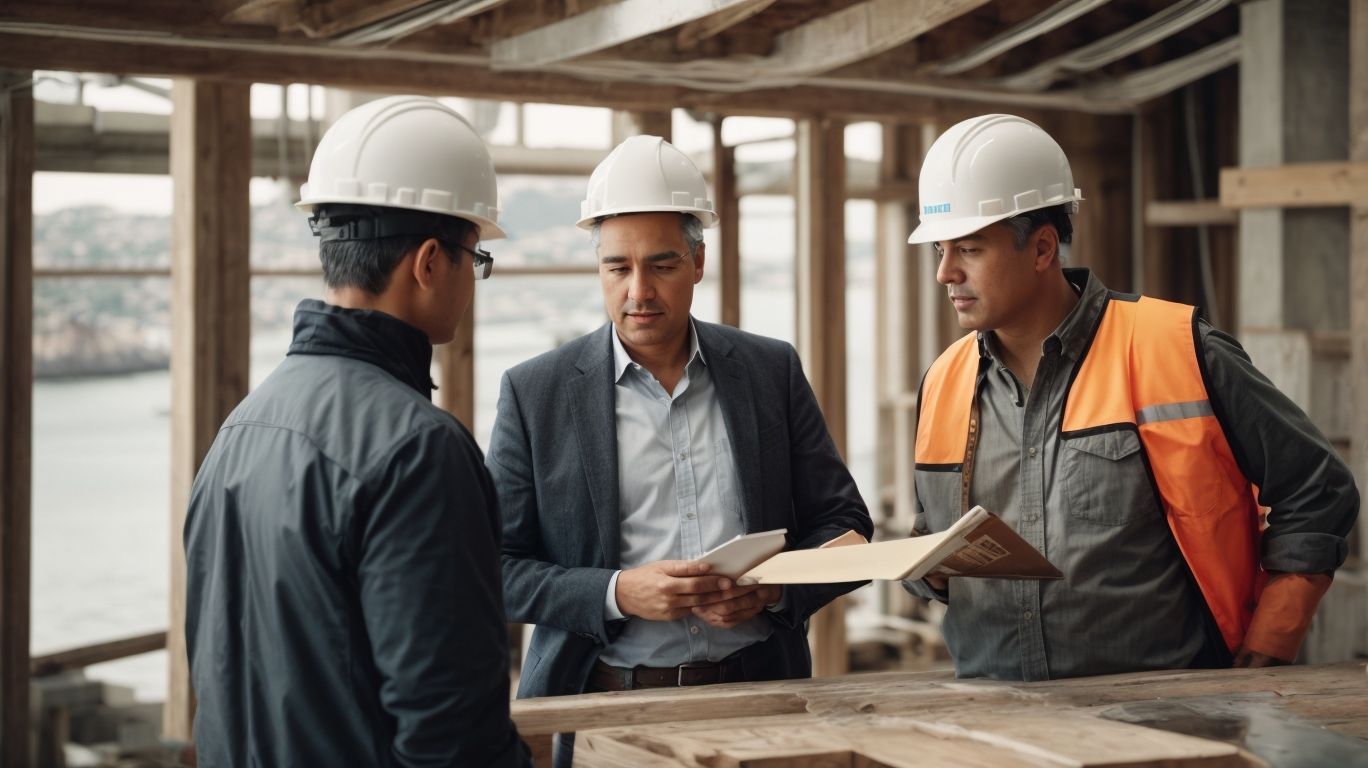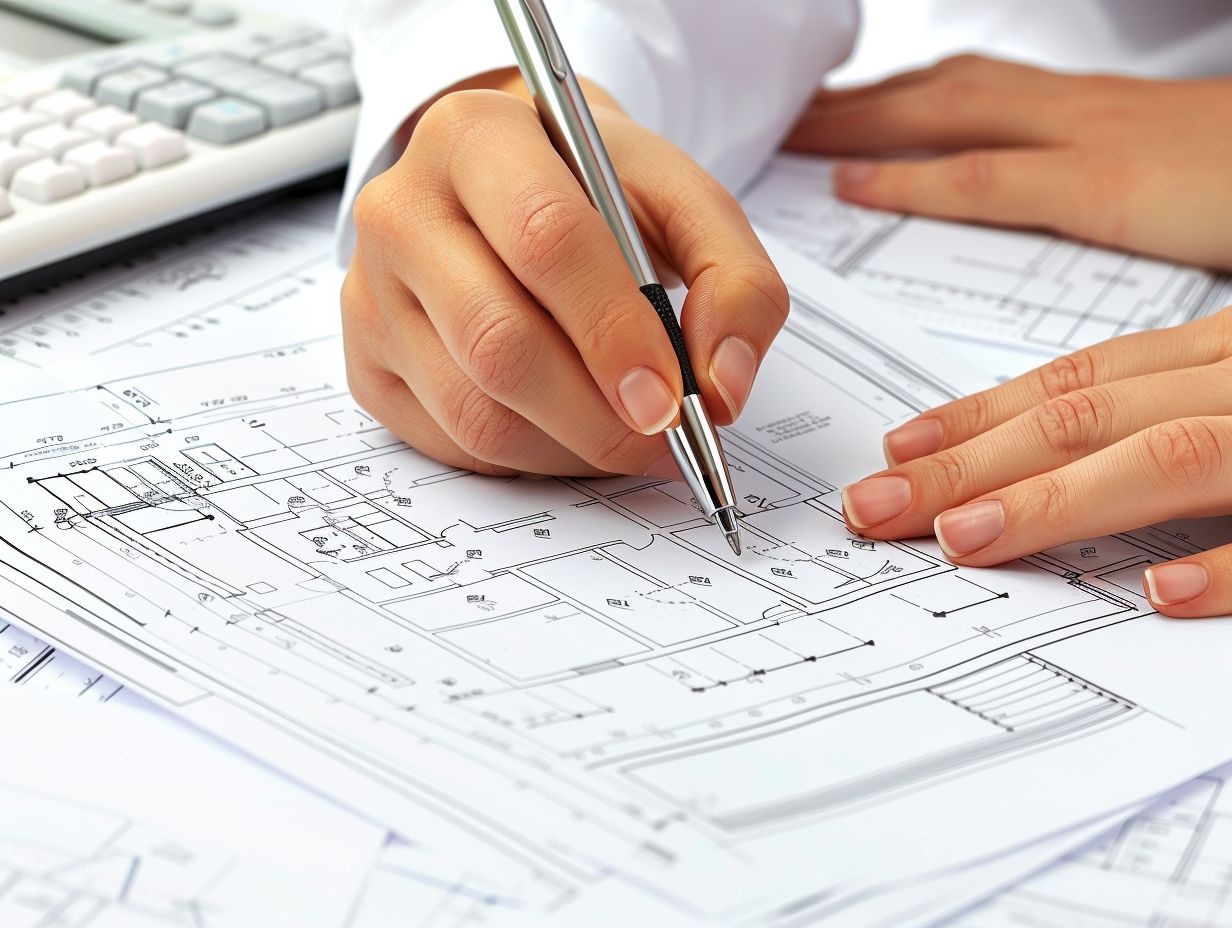
Load-Bearing Wall Solutions in the SF Bay Area: Engineering Expertise
Are you considering remodeling your home or making structural changes? In the process, you might encounter the need to remove a load-bearing wall. Understanding what a load-bearing wall is, the reasons for its removal, and the solutions available is crucial for a successful project. This comprehensive guide explores everything you need to know about load-bearing walls and the solutions available, particularly in the context of the San Francisco Bay Area. From the signs of a load-bearing wall to the considerations specific to this region, we delve into the vital information you need to make informed decisions. We provide insights into finding the right engineering expertise for load-bearing wall solutions in the SF Bay Area. Whether you’re a homeowner, contractor, or industry professional, this article equips you with essential knowledge for navigating load-bearing wall projects in the Bay Area.
What Is a Load-Bearing Wall?
A load-bearing wall is a crucial structural element in construction that supports the weight of the building and its occupants, playing a vital role in maintaining the structural integrity and stability of the entire edifice. It serves as a primary means of transferring the load from the upper sections of the structure down to the foundation. Building codes mandate the proper design and construction of load-bearing walls to ensure safety and stability. Structural engineering principles guide the placement and construction of these walls to withstand various forces, including seismic activities. Load-bearing walls may require seismic retrofitting to enhance their resistance to earthquakes, further emphasizing their significance in ensuring a building’s resilience and safety.
Why Do You Need to Remove a Load-Bearing Wall?
The removal of a load-bearing wall may be necessary in construction projects, particularly in scenarios where space optimization, structural modifications, or building enhancements are required for residential or commercial properties.
This process is often crucial in seismic retrofitting efforts, where reinforcing the structure’s ability to withstand seismic activity is essential. In commercial spaces, it may be necessary to create an open floor plan to accommodate a larger number of employees or customers.
In residential construction, removing a load-bearing wall can modernize living spaces, allowing for open-concept layouts or creating larger rooms to cater to evolving lifestyle preferences. These efforts often involve extensive planning, expert assessment of the building’s structural integrity, and meticulous execution to ensure safety and stability.
What Are the Benefits of Removing a Load-Bearing Wall?
The removal of a load-bearing wall can offer numerous benefits, including the creation of open and spacious layouts, facilitating innovative architectural designs, and enabling efficient project management in construction initiatives.
By eliminating a load-bearing wall, architects and designers can seamlessly integrate modern, open-concept living spaces, allowing natural light to flow through the entire area and enhancing the overall aesthetic appeal of the structure. This also provides flexibility in floor plan modifications and enables the incorporation of contemporary interior design elements.
From a project management perspective, the elimination of load-bearing walls streamlines construction processes, reducing time and labor costs. In seismic retrofitting, the removal of load-bearing walls can enhance the structural integrity of a building, making it more resilient to seismic forces.
How Do You Determine If a Wall Is Load-Bearing?
Determining whether a wall is load-bearing involves a comprehensive assessment that requires engineering expertise, structural analysis, and considerations for seismic retrofitting in construction projects.
This assessment typically begins with a thorough examination of the building’s original plans and blueprints to identify any indications of load-bearing walls. Engineers may utilize non-destructive testing methods such as ground-penetrating radar and ultrasonic pulse velocity to gather data on the structural integrity of walls.
Once potential load-bearing walls are identified, a thorough structural analysis is conducted to assess the impact of any modifications on the building’s overall stability. Seismic retrofitting considerations play a crucial role in determining the reinforcement needed to ensure the building’s resistance to earthquakes and other seismic events.”
What Are the Signs of a Load-Bearing Wall?
Several indicators can help identify a load-bearing wall, including its position in structural assessments, its impact on building projects, and its significance in seismic retrofitting measures for construction initiatives.
These walls often run perpendicular to floor joists, carry the weight of upper floors or roof structures, and play a crucial role in supporting the overall building framework. Load-bearing walls typically contain solid materials, such as concrete or brick, whereas non-load-bearing walls usually consist of lightweight materials like gypsum board or metal studs.
Recognizing these signs is fundamental for architects, engineers, and construction professionals to ensure the safety and stability of any building project, especially when undertaking seismic retrofitting initiatives.
How Can You Confirm If a Wall Is Load-Bearing?
Confirmation of a wall’s load-bearing nature involves rigorous building inspections, expert input from civil engineering professionals, and assessments of its impact on structural stability in construction projects.
Building inspections play a crucial role in this process by examining the materials, load distribution, and support systems. Civil engineering expertise is necessary to analyze the wall’s ability to bear weight, considering factors such as the building’s layout and design.
Detailed assessments of structural stability entail evaluating potential risks and implementing measures to reinforce the wall if needed. This meticulous approach ensures that construction projects adhere to safety standards and structural integrity requirements.
What Are the Solutions for Removing a Load-Bearing Wall?
Several solutions exist for safely removing a load-bearing wall, including:
- Wall reinforcement techniques involve the use of steel beams, braces, or columns to redistribute the load carried by the wall being removed.
- Seismic upgrades can include adding shear walls, foundation bolting, or other measures to enhance the building’s resistance to seismic forces.
- Specialized retrofit solutions may incorporate advanced materials or construction methods to maintain structural integrity while altering the building’s layout.
Installing a Beam
The installation of a load-bearing beam presents a viable solution for redistributing weight, accommodating load capacity, and utilizing appropriate building materials to ensure structural integrity and engineering solutions in construction projects.
By strategically placing load-bearing beams, the weight of the structure can be evenly distributed, reducing strain on individual structural elements and preventing potential structural failures. Selecting appropriate building materials such as steel, wood, or engineered lumber is crucial to meet the specific load-bearing requirements and ensure longevity.
Engineering solutions play a pivotal role in assessing the structural needs, calculating the load capacity, and designing the load-bearing beam system to meet safety standards and construction regulations.
Adding a Support Column
The addition of a support column serves as an effective method for reinforcing load-bearing structures, utilizing suitable construction materials, and adhering to established building design and construction standards in construction projects.
It plays a vital role in distributing the weight and stress placed on the structure. Various construction materials such as steel, concrete, and composite materials are commonly used for support columns to ensure durability and stability. These columns are designed to meet building codes and standards to ensure the safety and integrity of the overall structure.
By integrating support columns effectively, architects and engineers can optimize the design and functionality of buildings while meeting regulatory requirements.
Using a Cantilevered Floor System
Employing a cantilevered floor system offers a viable solution for load-bearing wall removal, integrating principles of seismic engineering, compliance with building regulations, and leveraging construction expertise to ensure structural stability in construction projects.
This innovative approach allows for the redistribution of structural loads, creating a seamless transition when removing load-bearing walls. By harnessing the principles of seismic engineering, the cantilevered floor system enhances the building’s resilience to ground motion and seismic forces. Strict adherence to building regulations ensures that the construction meets safety standards, while the application of construction expertise guarantees the successful implementation of this technically demanding solution.
What Are the Considerations for Removing a Load-Bearing Wall in the SF Bay Area?
When considering the removal of a load-bearing wall in the SF Bay Area, crucial considerations include:
- Expertise in local building codes
- Adherence to earthquake safety measures
- Securing the necessary building permits for construction projects
Expert knowledge of the unique construction regulations in the SF Bay Area is essential to ensure that the removal of load-bearing walls complies with seismic engineering standards. Obtaining relevant building permits from local authorities is imperative for legal and safety reasons.
Given the region’s susceptibility to seismic activity, professionals must prioritize earthquake safety measures and employ strategies to reinforce structural integrity post-wall removal.
Building Codes and Permits
Adherence to local building codes and securing appropriate permits are paramount considerations for removing load-bearing walls in the SF Bay Area, ensuring compliance with building regulations and meeting specific construction requirements for building projects.
These regulations help to ensure the safety and structural integrity of buildings, particularly in an area prone to seismic activity like the SF Bay Area. By obtaining permits and following building codes, homeowners and contractors can mitigate the risk of structural damage and protect the occupants.
The SF Bay Area has specific regulations related to seismic retrofitting and reinforcement, making it crucial to adhere to building codes when altering load-bearing elements. Failure to comply with these requirements can result in costly delays, fines, and potential safety hazards.
Structural Engineering Expertise
In the SF Bay Area, accessing structural engineering expertise and professional consultation is essential for addressing load-bearing wall removal, executing structural modifications, and implementing effective seismic engineering solutions in construction projects.
This region’s unique geological conditions demand the integration of seismic upgrades for ensuring the structural integrity of buildings, especially after load-bearing wall removal. Professional consultation enables the assessment of potential risks and the development of tailored engineering solutions to mitigate seismic vulnerabilities.
By incorporating advanced engineering techniques, such as base isolation and bracing systems, structural engineers can enhance the resilience of buildings against seismic events, safeguarding both the infrastructure and the occupants within. Therefore, the expertise of structural engineers forms the cornerstone of safe and sustainable construction practices in the dynamic SF Bay Area landscape.
Potential Impact on Other Structural Elements
Considering the potential impact on other structural elements is crucial when removing load-bearing walls in the SF Bay Area, necessitating the application of appropriate construction techniques, building practices, and measures to maintain structural support in construction projects.
This involves a thorough evaluation of the building’s overall structural integrity and potential consequences on adjacent components. Ensuring ongoing support may require the installation of additional supportive elements or reinforcement of existing structures. Collaboration with structural engineers and adherence to local building codes are imperative for successful outcomes. By prioritizing these considerations, construction projects can proceed efficiently while upholding the integrity of the SF Bay Area’s architectural landscape.
Cost and Time Factors
Assessing the cost and time factors associated with removing load-bearing walls in the SF Bay Area requires expertise in construction methods, understanding the complexities of building renovations, and implementing effective construction techniques tailored to the specific project requirements.
By comprehensively evaluating the structural implications and adhering to local building codes, skilled professionals can offer accurate estimates, mitigating potential delays. The Bay Area’s unique architectural styles necessitate a nuanced approach, ensuring seamless integration of the design changes.
Employing advanced planning and coordination, professionals can optimize the renovation process while considering material availability and subcontractor scheduling. Addressing these factors proactively fosters smooth project execution, underscoring the significance of leveraging construction expertise in load-bearing wall removal projects in the SF Bay Area.
How to Find the Right Engineering Expertise for Load-Bearing Wall Solutions in the SF Bay Area?
Finding the right engineering expertise for load-bearing wall solutions in the SF Bay Area involves evaluating proficiency in seismic engineering, compliance with building codes, and the ability to offer tailored engineering solutions specific to the region’s construction requirements.
It’s essential to seek professionals familiar with the unique seismic challenges in the Bay Area, who can demonstrate a deep understanding of seismic upgrades and structural analysis. Knowledge of local building codes, such as CBC and SFBC, is crucial for ensuring compliance and safety.
A reputable engineering consultancy should prioritize the assessment of existing structures, recommending suitable reinforcement techniques, and delivering cost-effective yet durable solutions for load-bearing walls in seismic zones.




No Comments